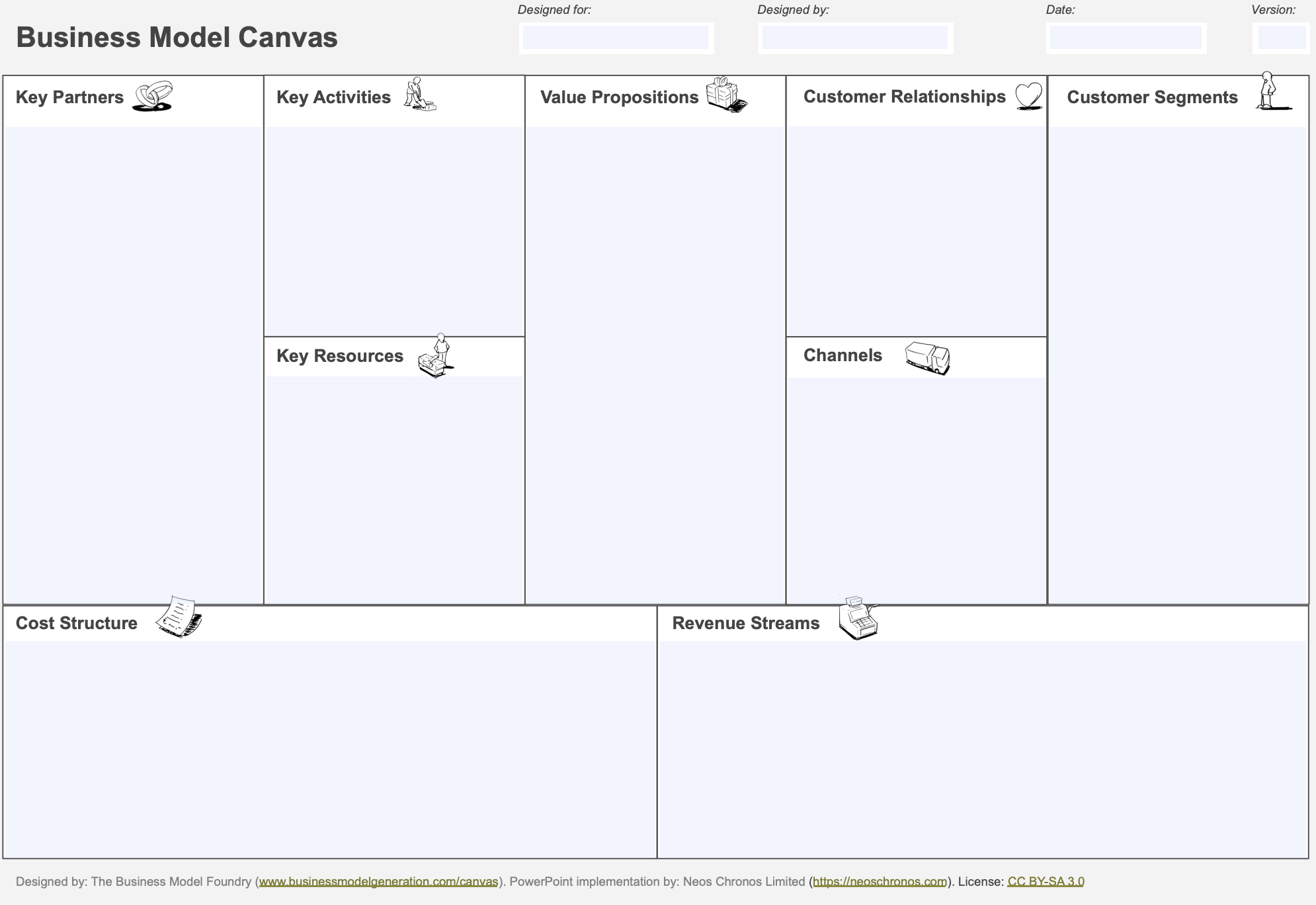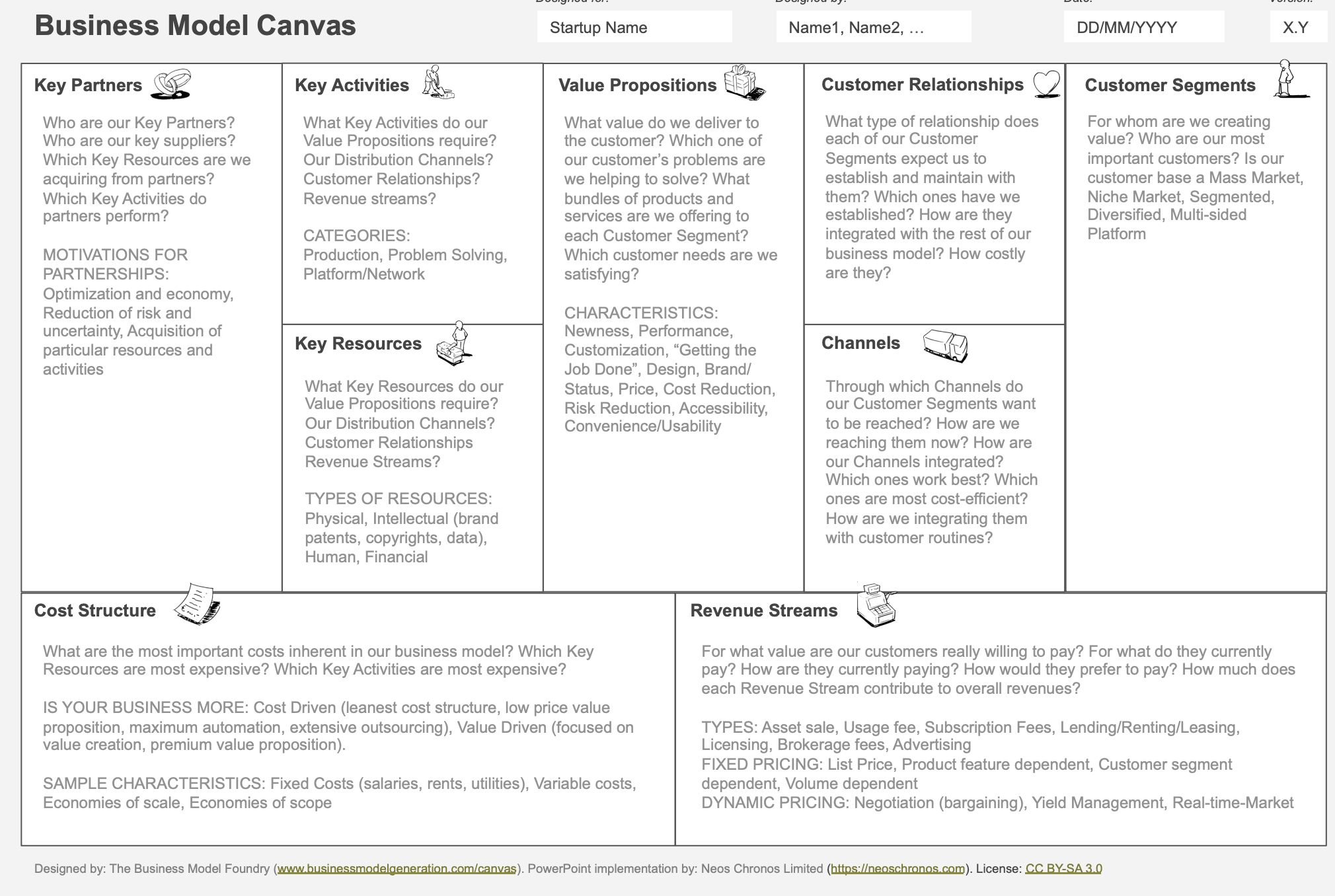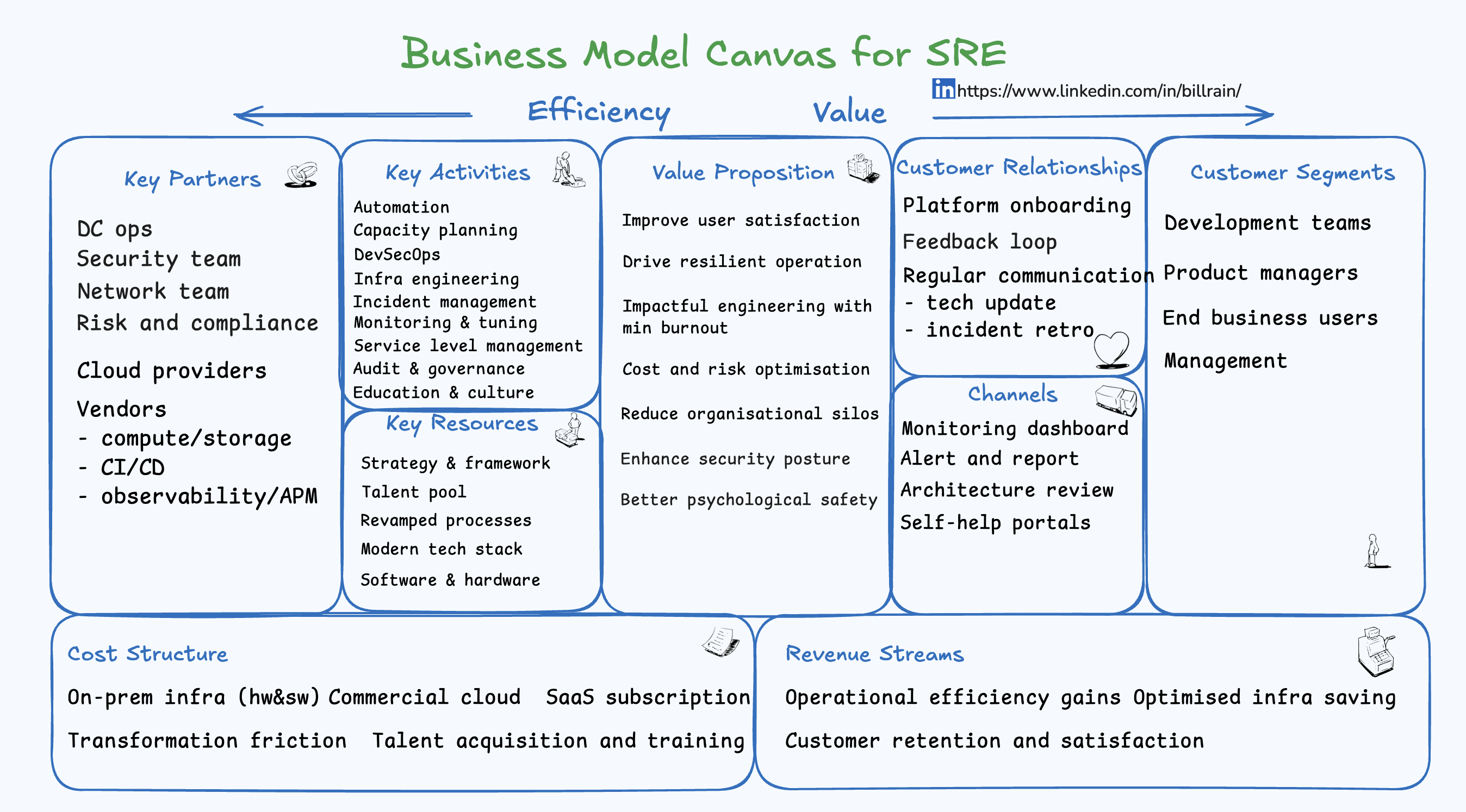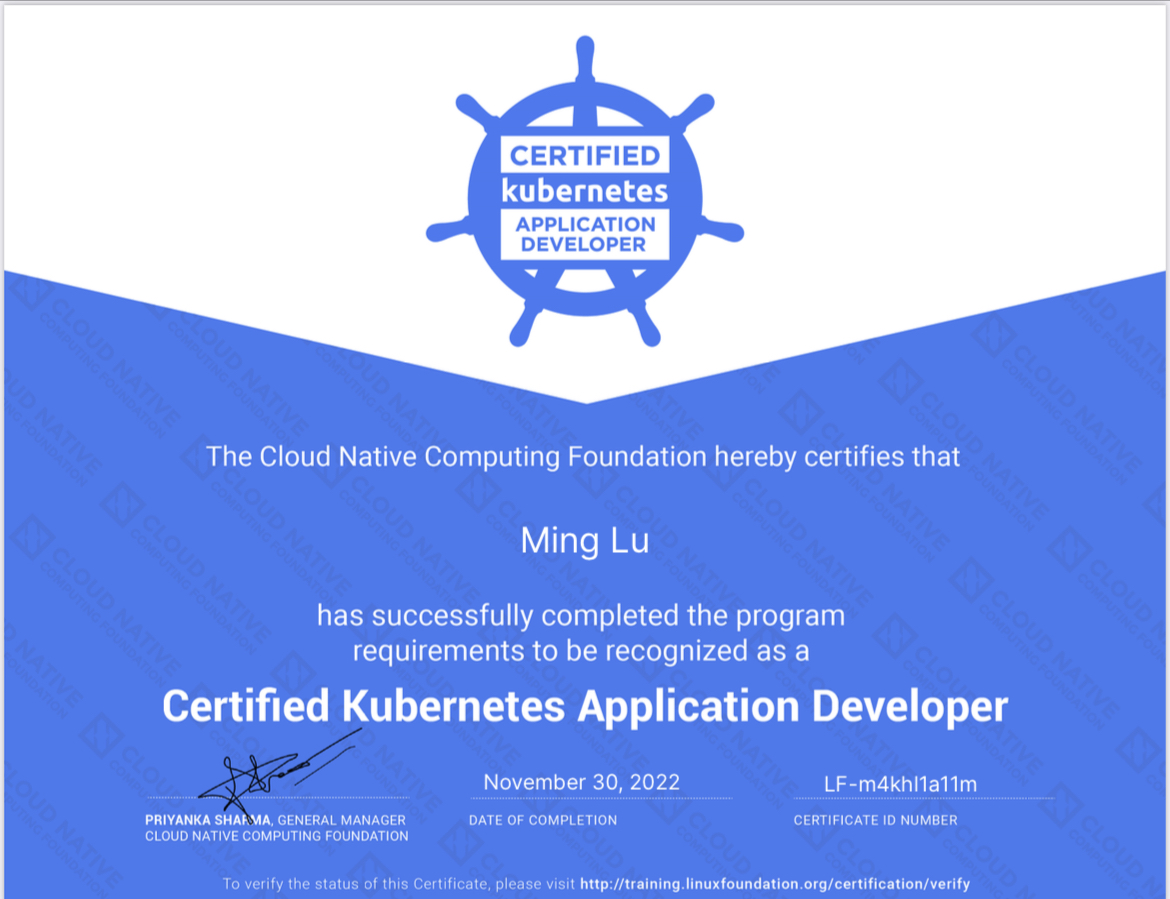1. History of the Business Model Canvas
The Business Model Canvas (BMC), introduced by Alexander Osterwalder in his book Business Model Generation, is a strategic management tool used by organizations to visualize and develop business models. The BMC focuses on nine essential building blocks that cover the product or service’s value proposition, customer relationships, key resources, key activities, and more. It has been widely adopted across industries for its clarity, simplicity, and focus on creating and delivering value.
 Source: Neos Chronos - How to Create your Strategyzer Business Model Canvas
Source: Neos Chronos - How to Create your Strategyzer Business Model Canvas
As organizations continue to evolve in the digital era, so do their approaches to maintaining high reliability, especially in fast-moving software environments. This is where the principles of Site Reliability Engineering (SRE) come into play. By leveraging the structure of a Business Model Canvas, companies can apply these principles to build robust, scalable, and reliable infrastructures.
2. SRE Principles and Practices
Site Reliability Engineering (SRE) is a discipline that applies software engineering practices to IT operations to create systems that are scalable and reliable. It originated at Google in the early 2000s and has since been adopted by companies worldwide. Some core principles of SRE include:
- Reliability as a feature: Treating reliability as a key feature in product development rather than an afterthought.
- Automation: Automating operational tasks to reduce manual toil and improve efficiency.
- Error Budgets: Striking a balance between development velocity and system stability using error budgets, a predefined allowable threshold for system unreliability.
- Monitoring and Observability: Developing robust monitoring systems to detect and respond to incidents swiftly.
- Incident Management and Postmortems: Establishing processes for handling incidents and conducting blameless postmortems to improve systems continuously.
These principles ensure that systems are both resilient and scalable, but they also require a transformation in the way organizations think about their infrastructure and operations. Enter the Business Model Canvas for SRE.
3. SRE: A Transformation or New Business Model
Applying SRE principles isn’t merely a shift in engineering—it’s a transformation of an organization’s business model. By embracing SRE, companies can increase the reliability and scalability of their systems, which directly impacts the bottom line through improved customer satisfaction and reduced downtime costs.
SRE can be seen as a new business model that organizations can adopt to improve not just technology, but also processes and people. It transforms the way teams collaborate across development, operations, and business functions, breaking down traditional silos and fostering an environment of continuous improvement.
Just as the original BMC helps startups and established companies to structure their value propositions and resources, the SRE version of the canvas focuses on reliability, resilience, and operational efficiency, providing a strategic framework for organizations to implement SRE at scale.
 Source: Neos Chronos - How to Create your Strategyzer Business Model Canvas
Source: Neos Chronos - How to Create your Strategyzer Business Model Canvas
4. Introducing the Business Model Canvas for SRE
The Business Model Canvas for SRE can be structured similarly to the traditional canvas, but with a focus on the unique elements of SRE practices and how they impact the organization. Below is an outline based on my SRE Business Model Canvas:

Key Partners
- Data Center (DC) Operations: Essential for managing physical infrastructure and ensuring optimal performance of on-premises systems.
- Security Teams: Collaborate closely to integrate security practices into SRE processes, ensuring robust protection against threats.
- Network Teams: Crucial for maintaining reliable connectivity and optimizing network performance for seamless operations.
- Risk and Compliance: Ensure SRE practices align with regulatory requirements and organizational risk management strategies.
- Cloud Providers: Provide scalable infrastructure and services that support SRE practices in hybrid or cloud-native environments.
- Vendors: Supply critical tools and technologies (e.g., compute/storage, CI/CD, observability tools) that enable effective SRE implementation and management.
Key Activities
- Automation: Reducing toil by automating repetitive operational tasks, standardize process to minimize human error, freeing up SRE teams to focus on higher-value activities and innovation.
- Capacity Planning: Ensuring systems scale based on predicted demand, preventing outages and optimizing resource utilization.
- DevSecOps: Integrating security practices into the software development lifecycle, enhancing overall system resilience and protection against threats.
- Infrastructure Engineering: Building and maintaining reliable and scalable infrastructure that can adapt to changing business needs and technological advancements.
- Incident Management: Responding to and resolving incidents effectively, learning from blameless retrospectives to continuously improve system reliability.
- Monitoring and Tuning: Implementing comprehensive logging, tracing, and metrics to proactively identify and resolve potential bottlenecks before they impact users.
- Service Level Management: Defining and maintaining service levels, SLOs/SLIs, and managing service tickets to ensure alignment with business objectives and user expectations.
- Audit & Governance: Ensuring compliance with industry standards and regulations, and providing transparent reporting to auditors and stakeholders.
- Education & Culture: Fostering an SRE culture and mindset across different functional teams, promoting knowledge sharing and continuous learning.
Key Resources
- Strategy & Framework: A well-defined strategy and framework for implementing SRE, providing clear guidelines and best practices for the organization.
- Talent Pool: A skilled team of engineers proficient in SRE practices, capable of driving innovation and maintaining complex systems.
- Revamped Processes: Optimized workflows to reduce inefficiencies, streamlining operations and improving overall productivity.
- Modern Tech Stack: Utilizing cutting-edge technologies and tools that enable efficient monitoring, automation, and system management.
- Software & Hardware: The infrastructure needed to support SRE initiatives, including both on-premises and cloud-based resources.
- Knowledge Base: A comprehensive repository of documentation, best practices, and lessons learned to support ongoing SRE efforts.
Value Proposition
- Improve User Satisfaction: Enhancing user experiences through better reliability, faster performance, and reduced downtime.
- Drive Resilient Operation: Ensuring high availability and fault tolerance, minimizing the impact of failures on business operations.
- Impactful Engineering with Minimum Burnout: Implementing sustainable processes that avoid overburdening the team while maximizing productivity and innovation.
- Cost and Risk Optimization: Reducing downtime and infrastructure costs through efficient resource management and proactive problem-solving.
- Reduce Organizational Silos: Promoting collaboration between development, operations, and business teams, fostering a culture of shared responsibility.
- Enhance Security Posture: Integrating security into every layer of operations, reducing vulnerabilities and improving overall system protection.
- Better Psychological Safety: Creating an environment where teams can take calculated risks, learn from failures, and continuously improve without fear of blame.
- Accelerated Innovation: Enabling faster deployment of new features and services through improved reliability and automated processes.
Customer Segments
-
Development Teams: Engineers and developers who benefit from SRE practices to build more reliable and scalable systems, reducing the operational burden and allowing them to focus on feature development.
-
Product Managers: Stakeholders who rely on SRE to ensure product stability, performance, and user satisfaction, enabling them to deliver better products and meet business objectives.
-
End Business Users: Employees or external customers who experience improved service reliability, faster issue resolution, and enhanced overall user experience as a result of SRE practices.
-
Management: Executive and leadership teams who gain strategic advantages from SRE, including improved operational efficiency, cost optimization, and better alignment between IT operations and business goals.
Customer Relationships
-
Platform Onboarding: Providing comprehensive training and support to ensure smooth integration of teams onto SRE platforms, reducing friction and accelerating adoption of best practices.
-
Feedback Loop: Implementing structured processes for gathering, analyzing, and acting upon user feedback to continuously improve SRE practices and align them with evolving business needs.
-
Regular Communication: Maintaining transparent and frequent communication channels through various means such as newsletters, tech talks, and incident retrospectives to keep all stakeholders informed and engaged in the SRE process.
-
Collaborative Problem-Solving: Fostering a culture of shared responsibility where SRE teams work closely with development and product teams to address challenges and optimize system performance.
-
Self-Service Resources: Developing and maintaining comprehensive documentation, knowledge bases, and tools that empower teams to independently troubleshoot issues and implement SRE practices.
Channels
- Monitoring Dashboards: Providing transparent, real-time metrics for reliability and performance, enabling quick identification of issues and proactive system management.
- Alert and Report Systems: Implementing automated incident detection and response mechanisms to minimize downtime and improve overall system reliability.
- Architecture Reviews: Conducting regular system architecture assessments to identify areas for improvement, ensuring scalability and resilience as the organization grows.
- Self-help Portals: Developing comprehensive knowledge bases and documentation to empower teams to troubleshoot issues independently, reducing dependency on SRE teams for minor problems.
- Collaboration Platforms: Utilizing tools like Slack or Microsoft Teams to facilitate real-time communication and knowledge sharing across teams.
Cost Structure
- On-prem Infrastructure (HW & SW): Expenses related to maintaining physical infrastructure, including hardware upgrades, software licenses, and data center operations.
- Commercial Cloud & SaaS Subscription: Costs associated with cloud services and subscription-based software that support SRE practices and enable scalability.
- Transformation Friction: Initial investments and potential productivity dips during the transition to an SRE model, including process changes and cultural shifts.
- Talent Acquisition and Training: Ongoing costs for recruiting skilled SRE professionals and providing continuous education to keep the team updated with the latest practices and technologies.
- Tooling and Automation: Investments in developing and maintaining custom tools and automation scripts to improve efficiency and reduce manual toil.
Revenue Streams
- Operational Efficiency Gains: Financial benefits derived from improved system uptime, reduced operational overhead, and increased productivity across teams.
- Optimized Infrastructure Savings: Cost savings achieved through better resource allocation, capacity planning, and elimination of redundant systems.
- Customer Retention and Satisfaction: Increased revenue from improved customer loyalty and positive word-of-mouth, resulting from enhanced service reliability and performance.
- Faster Time-to-Market: Additional revenue generated from the ability to release new features and products more quickly and reliably.
- Competitive Advantage: Potential for increased market share and premium pricing due to superior service reliability and customer experience.
Conclusion: Leveraging the Business Model Canvas for SRE Success
By applying the Business Model Canvas for SRE, organizations can create a comprehensive and strategic approach to integrating Site Reliability Engineering practices into their infrastructure. This framework provides a clear visualization of the key components necessary for successful SRE implementation, from essential partnerships and activities to value propositions and revenue streams.
The SRE Business Model Canvas serves as:
- A strategic planning tool for organizations looking to adopt or enhance their SRE practices
- A communication aid to align different stakeholders on the value and implementation of SRE
- A roadmap for identifying areas of improvement and potential challenges in SRE adoption
As the digital landscape continues to evolve, the ability to maintain reliable, scalable, and efficient systems becomes increasingly crucial. Organizations that successfully implement SRE principles using this canvas approach are better positioned to:
- Enhance customer satisfaction through improved service reliability
- Optimize costs and resource allocation
- Foster innovation and agility in their development processes
- Build resilient operations that can withstand the challenges of rapid growth and technological change
Ultimately, the Business Model Canvas for SRE provides a robust blueprint for organizations to stay competitive in today’s fast-paced digital world, ensuring they can deliver high-quality, reliable services while continuously adapting to meet evolving business and customer needs.
 如何备考K8S CKAD认证
如何备考K8S CKAD认证